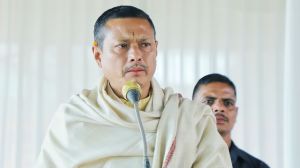Understanding the patent law, its flaws
While the Patent (Amendment) Ordinance issued on January 8 seeks to make India comply with the provisions of the World Trade Organisation...

While the Patent (Amendment) Ordinance issued on January 8 seeks to make India comply with the provisions of the World Trade Organisation (WTO) on intellectual property rights, it is far too liberal, and goes beyond what the WTO itself wanted. As such, the way the patent ordinance has been drafted, it will allow companies who patent life forms such as, say, leeches used for sucking impure blood, to get Exclusive Marketing Rights (EMRs) in India. Genetically altered plants and animals, provided this can be used as a medicine or a drug, can similarly be granted EMRs in India. This was obviously not the intention, but has resulted from poor drafting of the ordinance.
Under the WTO agreement, member countries had to provide for a mailbox’ mechanism to allow processing of product patents in areas of pharmaceuticals and agricultural chemicals by January 1, 1995. Under this, on fulfillment of certain conditions, EMRs are to be granted for a period of five years or until the patent is granted or rejected, orwhichever is shorter. Since the bill to provide for this could not be passed, the government issued the Patent (Amendment) Ordinance last month.
The crux of the problem lies in the definition of what can be patented, and for what EMRs can be granted. Not only this amendment, but even the expression pharmaceutical and agricultural chemical products’, which is the foundation of this ordinance, is ambiguous. Neither the WTO nor the Patent (Amendment) Bill of 1998 or the Ordinance of 1999 have defined it. One is therefore left wondering whether this expression would include living materials or a part there from, or living organisms (micro-organisms, leeches, etc.) of any kinds, although they are not strictly chemical substances but could be interpreted for inclusion as pharmaceuticals.
The Government should have satisfied the WTO’s requirement by a short piece of legislation, sticking to the WTO’s expression pharmaceutical and agricultural chemical products’. And to be on the safe side, this legislationshould have suitably defined this expression as including only items which were non-life forms. But instead, the ordinance used the expression substance itself intended for use, or capable of being used, as medicine or drug’, as a subject matter for patent/EMRs.
Let us examine what medicine or drug means. Obviously, this expression does not include chemicals obtained from plants, or synthetic chemicals, which are used for purposes other than as medicines or drugs. A substance means any particular kind of matter, living or non-living. It could be argued that India has actually allowed a far wider scope for patenting than that asked for by the WTO.
Ironically, the ordinance even eliminates some of the safeguards that the WTO itself provides for what is generally defined as diagnostics, therapeutic and surgical methods. The WTO/TRIPS Agreement (27-3a), for example, excludes from patentability, diagnostic, therapeutic and surgical methods for the treatment of humans or animals. The Patent (Amendment)Ordinance, on the other hand, sticks to the definition provided in the Indian Patent Act of 1970, which allows these to be patented.
Similarly, the government appears to have slipped up on the issue of protecting Indian systems of medicine. The Congress party, for example, agreed to support the BJP bill on the patent amendment, only if an amendment was made to protect from patents/EMRs, various systems of Indian medical practices falling in public domain. The purpose of this public interest initiative, however, has been partly defeated by the ordinance, by accepting the definition of Indian systems of medicines given in the Indian Medicine Central Council Act, 1970. This Act only includes medicines covered by Ashtang Ayurveda, Sidha and Unani Tibb. It does not cover the medicinal plants and drugs used in indigenous medical system/practices of the healers of tribal and rural communities, including folk herbal medicines.
Exploitation or bio-piracy mostly occurs through patenting based on traditionalknowledge systems falling in public domain. About 70 per cent of health care in India are still accounted for indigenous medical systems because they are within the access of common people due to low cost. Patents/EMRs based on traditional knowledge and medicinal plants will immediately deprive them of their health care. The forthcoming Bill should itself define the Indian medical systems to include all indigenous knowledge bases.
The major merits of the Patent (Amendment) Bill, 1995, proposed by the Congress and also retained in the Patents (Amendment) Ordinance, 1999, of course, are (i) examination of applications for product patent/EMRs to ensure that provisions of Section 3 and 4 of the Patent Act, 1970, are not violated. Those sections ensure that the inventions do not fall under exception to patent-ability; (ii) deletion of Section 39 of the Indian Patents Act, 1970, which imposed restrictions on Indians for filing of patent applications abroad; (iii) for inventions made in India, the applicant doesnot have to obtain a product patent and marketing approval in some other country, but has the option of obtaining a process patent for an identical invention in India; (iv) government’s intervention in case the EMRs are used against public interest or in any other circumstances of extreme emergency; (v) expansion of compulsory licensing provisions, public non-commercial use, and price fixation in the case of EMRs also; and (v) retention of Clause 64 of the Patent Act, 1970, allowing any person to approach the high court for revocation of patent/EMRs. A major problem with the ordinance, however, is that it does not include various safeguards and other provisions which, in themselves, are not inconsistent with the WTO agreement. These include those (i) to protect public health, nutrition, public order or morality and environment; and (ii) to promote public interests in sectors of vital interest to their socio-economic and technological development. These demerits, apart from the ones of definition talked ofearlier, should be removed in the forthcoming bill to be tabled in Lok Sabha. Furthermore, since the new patent/EMRs regimes would hopefully be covering sensitive areas of social life, ethics and environment, the Bill to follow the ordinance should have additional clauses that would allow the public interest groups to intervene in the revocation of EMRs on the ground of public morality, ethics, social life, public health and environment, besides 15 grounds already covered for this purpose in the Patent Act, 1970, Section 64.
The author is a former expert of FAO, United Nations, and Director, ICAR.



- 01
- 02
- 03
- 04
- 05




























